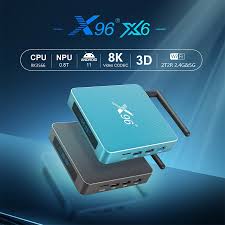Unleashing the Power of RK3566 4K Support in a Futuristic Tale
Chapter 1: The Dawn of Clarity
In the year 2147, the neon-lit city of Neonspire buzzed with life. Floating billboards illuminated the skyline, their screens flashing vibrant advertisements in stunning detail. At the heart of this technological marvel was the RK3566, a quad-core Cortex-A55 processor renowned for its RK3566 4K support, capable of decoding H.265, H.264, and VP9 video at 60 frames per second. For Aelar, a young tech scavenger, this chip was more than just a piece of silicon—it was a key to unlocking the secrets of the past.
Aelar adjusted his goggles, their lenses flickering with static as he rummaged through a pile of discarded gadgets in the Underdistrict. His fingers brushed against a dusty circuit board, and his heart raced. Etched onto its surface was the unmistakable logo of Rockchip, the creators of the RK3566. “This could change everything,” he muttered, clutching the find close. The RK3566 4K support wasn’t just a feature; it was a lifeline in a world where high-definition memories were currency.
Neonspire wasn’t always this way. Decades ago, a digital collapse had wiped out most archival data, leaving humanity scrambling to rebuild. The RK3566, with its ability to process 4K video seamlessly, had been a cornerstone of the old entertainment systems. Now, its rediscovery promised Aelar a chance to restore lost films—visual treasures that could fetch a fortune in the overpopulated upper tiers.
He slipped the board into his satchel, the faint hum of drones overhead urging him to move. The Underdistrict was no place to linger, not with enforcers patrolling for scavengers like him. As he darted through the shadows, Aelar’s mind buzzed with possibilities. The RK3566 4K support could decode ancient footage, revealing stories of a world before the collapse. But first, he needed a way to power it up.
Chapter 2: The Workshop Haven
Back in his cramped workshop, Aelar set the circuit board on a cluttered table. Tools and wires spilled across the surface, illuminated by a flickering LED lamp 🌟. He connected the RK3566 to a salvaged power supply, its 22nm architecture humming to life. The chip’s Mali-G52 GPU, paired with its video processing unit, was designed for efficiency, and Aelar marveled at its compact power. “Let’s see what you can do,” he whispered, plugging in a cracked holoscreen.
The screen sputtered, then glowed. Lines of code danced across it before resolving into a crisp 4K image—a forest, green and untouched, swaying in a breeze that hadn’t existed for a century. Aelar’s breath caught. The RK3566 4K support was flawless, rendering every leaf in vivid detail. This wasn’t just a video; it was a window to a lost era.
He pulled up the chip’s specs on a nearby datapad, scribbling notes as he went. The table below captured the essentials:
| Feature | Details |
|---|---|
| CPU | Quad-core Cortex-A55 @ 1.8GHz |
| GPU | Mali-G52 MP2 |
| Video Decoding | 4K@60fps (H.265/H.264/VP9) |
| NPU | 0.8 TOPS |
| Manufacturing Node | 22nm |
The RK3566 4K support wasn’t its only strength. With an integrated Neural Processing Unit (NPU) offering 0.8 TOPS, it could handle lightweight AI tasks—perfect for analyzing degraded footage. Aelar grinned. If he could pair this with a neural enhancer, he might even reconstruct missing frames.
But the workshop wasn’t safe. The hum of the machinery drew attention, and soon, a shadow loomed at the door. It was Kalia, a rival scavenger with a knack for finding trouble. “What’s that glow?” she demanded, eyeing the holoscreen. Aelar tensed, but Kalia’s gaze softened as the forest footage played. “That’s… beautiful. Where’d you get the tech?”
“RK3566,” Aelar said, tapping the board. “Its 4K support is unreal. Found it in the junk piles.”
Kalia smirked. “You’re not the only one who knows about Rockchip’s gems. I’ve got a buyer up top who’d kill for that clarity.”
Chapter 3: A Deal in the Sky
The upper tiers of Neonspire glittered like a constellation, their towers piercing the smog. Aelar and Kalia rode a rickety lift, the RK3566 tucked safely in Aelar’s satchel. The buyer, a collector named Vren, lived in a penthouse lined with ancient screens. As they stepped inside, Vren’s eyes gleamed at the sight of the circuit board. “RK3566 4K support, huh? Let’s test it.”
Vren connected the chip to a massive display, its HDMI 2.0 interface syncing effortlessly. Aelar loaded a file—a fragmented documentary from 2075. The RK3566 4K support kicked in, decoding the footage with precision. Waves crashed against a coastline, colors popping in a way that made the room feel alive. Vren whistled. “This beats anything I’ve seen. Name your price.”
Aelar hesitated. Selling it meant losing access to the past, but keeping it risked drawing enforcers. Kalia nudged him. “We split it. Half for you, half for me. Deal?”
“Deal,” Aelar agreed, though his mind raced. The RK3566 wasn’t just about 4K—it was about power. Its USB 3.0 and Gigabit Ethernet support hinted at broader applications, maybe even a network to share these rediscovered memories.
Vren handed over a stack of credits, and Aelar pocketed his share. As they left, Kalia glanced back. “You think there’s more out there?”
“Plenty,” Aelar said. “The RK3566 4K support is just the start.”
Chapter 4: Decoding the Future
Days later, Aelar sat in his workshop, the credits funding new tools 🌟. He’d kept a duplicate of the RK3566, experimenting with its capabilities. The chip’s video encoder could output 1080p at 60fps in H.265 or H.264—less than its 4K decoding, but still impressive. He wondered if he could use it to create new content, not just preserve the old.
Kalia burst in, breathless. “Enforcers are sweeping the Underdistrict. They heard about the 4K footage. We need to move.”
Aelar grabbed his gear, the RK3566 in hand. They fled to a safehouse, where he rigged a makeshift projector. The specs of the chip’s video prowess were clear in his mind, and he jotted them down:
| Aspect | Capability | Notes |
|---|---|---|
| Decoding | 4K@60fps (H.265/H.264/VP9) | Full RK3566 4K support |
| Encoding | 1080p@60fps (H.265/H.264) | Limited but efficient |
| Display Interfaces | HDMI 2.0, MIPI-DSI, LVDS | Versatile output options |
The projector hummed, casting the forest scene onto a wall. Kalia stared, transfixed. “This could rally people. Show them what we’ve lost.”
Aelar nodded. The RK3566 4K support wasn’t just a tech spec—it was a revolution. Its ability to render the past in stunning detail could inspire Neonspire to rebuild, not just scavenge. But the enforcers were closing in, their drones buzzing outside.
Chapter 5: The Stand
The safehouse door rattled as enforcers pounded it. Aelar overclocked the RK3566, pushing its 1.8GHz cores to their limit. He hacked into a citywide broadcast system, using the chip’s Gigabit Ethernet to upload the footage. The RK3566 4K support shone as the forest filled every screen in Neonspire, a beacon of hope.
“Stop them!” an enforcer shouted, but it was too late. Citizens flooded the streets, awed by the clarity of a world they’d forgotten. The RK3566 had turned a scavenger’s dream into a movement.
Kalia grinned. “You did it.”
“We did it,” Aelar corrected, the RK3566 warm in his hand. Its 4K support had sparked something bigger—a future worth fighting for.
Chapter 6: Legacy of the Lens
Weeks later, Neonspire buzzed with change. The RK3566 4K support became a symbol of resilience, its specs studied by rebels and techies alike. Aelar and Kalia scoured the Underdistrict for more chips, each find a step toward reclaiming history.
One evening, Aelar projected a new clip—a bustling city from 2040, alive with color. The Mali-G52 GPU handled the rendering effortlessly, the RK3566 4K support proving its worth once more. He smiled, knowing this was just the beginning.
The chip’s potential was vast, from AI-driven restoration to high-speed networking. A final table outlined its broader impact:
| Application | RK3566 Feature | Benefit |
|---|---|---|
| Video Playback | 4K@60fps Decoding | Immersive historical views |
| AI Analysis | 0.8 TOPS NPU | Frame reconstruction |
| Connectivity | USB 3.0, Gigabit Ethernet | Fast data sharing |
As the city rebuilt, Aelar’s legacy grew 🌟. The RK3566 4K support wasn’t just tech—it was a lens to the past, and a light for the future.